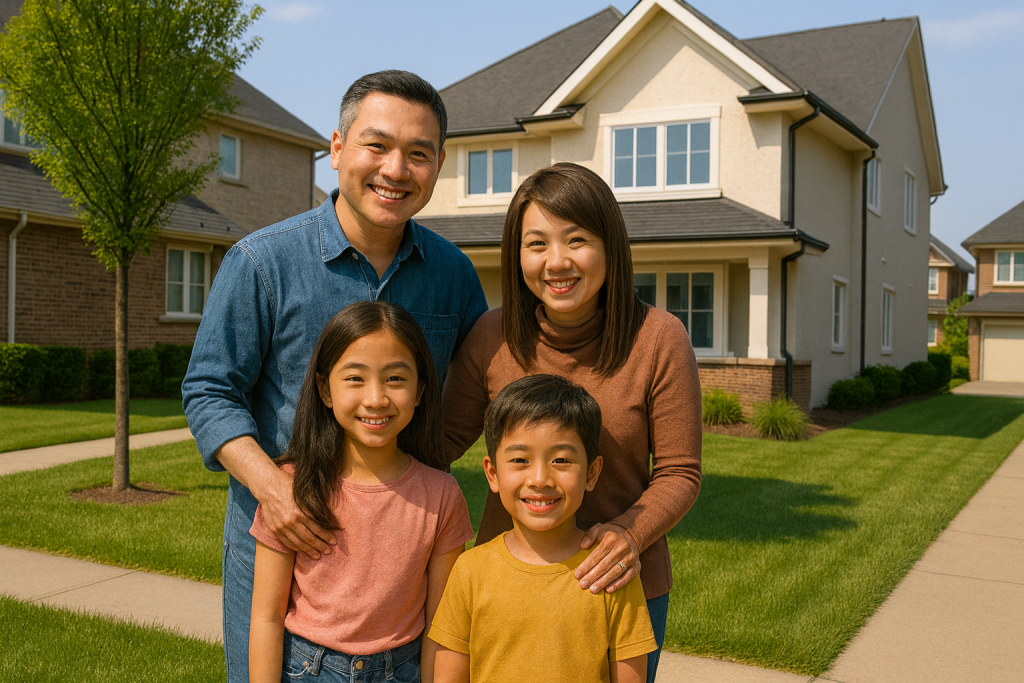Hong Kong, as a highly modernized city, has long attracted global attention for its real estate market. Over the past few decades, the primary logic driving Hong Kong real estate development has been its focus on economic returns. High property prices and densely packed urban areas have become defining characteristics of Hong Kong. However, this development model has also brought numerous challenges, such as limited living space, insufficient community facilities, and significant pressure on the natural environment. As society places increasing emphasis on quality of life and environmental protection, the concept of sustainable real estate has emerged as a key focus in improving the living environment and fostering community integration.
The Past and Present of Hong Kong Real Estate Development
Looking back at the history of Hong Kong real estate development, it is clear that its success has come at a cost. Limited land supply and high population density have made Hong Kong’s property market one of the most expensive in the world. For developers, scarce land resources have led to a focus on maximizing economic returns and using space as efficiently as possible. As a result, residential units in Hong Kong have become smaller and more expensive, forcing many residents to live in cramped conditions, which negatively impacts their quality of life.
At the same time, rapid urbanization has created a series of environmental issues. The reduction of green spaces, environmental degradation caused by overdevelopment, and the intensification of the urban heat island effect have all posed significant challenges to the city’s overall living environment. These problems not only affect the daily lives of residents but also threaten the long-term sustainability of Hong Kong real estate development. Against this backdrop, there is an urgent need for a new approach that balances economic benefits, environmental protection, and social responsibility to create a more livable urban space.
Sustainable Real Estate: A New Direction for Urban Development
The core idea of sustainable real estate is to integrate the balance of environmental, economic, and social factors throughout the lifecycle of real estate projects. This is not merely a technological innovation in construction but a comprehensive transformation of the philosophy behind urban development. For Hong Kong, achieving sustainable real estate requires efforts on multiple fronts.
First, building design must incorporate more environmentally friendly elements to promote green architecture. This includes using energy-efficient materials, reducing resource waste during construction, and introducing renewable energy technologies such as solar panels and rainwater harvesting systems. These measures can reduce the carbon footprint of real estate projects, enhance energy efficiency, and provide residents with a more comfortable living environment.
Second, the planning of community facilities must better address the needs of residents. In the past, real estate development often overlooked the diversity of community functions, resulting in a lack of public spaces and social venues. Moving forward, real estate projects in Hong Kong should focus on fostering community integration by increasing parks, pedestrian zones, and shared spaces. These features can provide residents with more opportunities to interact and build harmonious communities.
Additionally, the application of smart technology is another essential aspect of sustainable real estate. Smart building technologies can efficiently monitor and manage energy, water resources, and waste, further enhancing the sustainability of the living environment. For example, smart lighting systems that adjust brightness based on natural light not only save energy but also improve the convenience of daily life for residents.
Success Stories in Improving the Living Environment
In Hong Kong, there are already some real estate projects that have embraced the principles of sustainable real estate, serving as successful examples of how to enhance the living environment. The Kai Tak Development is a notable case. As a newly planned urban area, it integrates environmentally friendly design with a focus on public green spaces and pedestrian-friendly zones. This project aims to create a green and livable community for residents. Furthermore, its transportation and community facilities have been comprehensively planned, contributing to an improved living environment.
Another example worth mentioning is the redevelopment of Taikoo Place in Hong Kong Island East. This project has set clear goals for energy efficiency and carbon reduction while incorporating significant elements of community integration. Its open public spaces and multifunctional recreational facilities have not only enhanced the surrounding living environment but also provided residents with more opportunities for social interaction and leisure, making it a benchmark for the transformation of Hong Kong real estate development.
These examples demonstrate that Hong Kong has taken meaningful steps toward promoting sustainable real estate. Although challenges remain, these successful cases provide valuable lessons for the future of the industry.
Challenges and Future Prospects for Community Integration
Despite the growing focus on sustainable real estate in Hong Kong, there are still many challenges in its implementation. Limited land resources and high development costs make it difficult for developers to strike a balance between economic returns and sustainability. Furthermore, the lack of public participation in real estate projects often results in community needs being overlooked.
To achieve true community integration, cooperation among the government, private developers, and the public is essential. The government must strengthen policy support, such as offering tax incentives and subsidies, to encourage developers to adopt sustainable practices. At the same time, developers need to engage more actively with communities to ensure that their needs are considered in the design and planning of real estate projects.
In the future, fostering more public-private partnerships will be key. By integrating resources from both the public and private sectors, not only can development costs be reduced, but the social benefits of real estate projects can also be enhanced. Through such collaborative efforts, Hong Kong real estate development can evolve to prioritize sustainability and community well-being.
Toward a Better Future
Hong Kong real estate development is at a critical turning point. Moving away from a model that prioritizes economic returns above all, toward one that incorporates sustainable real estate principles, is an inevitable trend. This approach not only addresses pressing urban challenges but also significantly improves the living environment and raises the overall quality of life for residents.
As society continues to place greater value on sustainability and the living environment, Hong Kong has the potential to become a global leader in sustainable real estate. With the joint efforts of the government, private developers, and the public, Hong Kong’s real estate industry is well-positioned to embark on a more balanced and harmonious path, creating a city that is not only economically prosperous but also socially inclusive and environmentally sustainable.





